Ethanol consumption and taste preferences in C57BL/6ByJ and 129/J mice
- PMID: 8730208
- PMCID: PMC3638218
- DOI: 10.1111/j.1530-0277.1996.tb01630.x
Ethanol consumption and taste preferences in C57BL/6ByJ and 129/J mice
Abstract
Mice of the C57BL/6ByJ (B6) and 129/J (129) strains were offered different concentrations of taste solutions in 48-hr, two-bottle choice tests. In comparison with the 129 strain, the B6 strain had higher preferences for ethanol, sucrose, and citric acid. They had lower preferences for NaCl and similar preferences for capsaicin and quinine hydrochloride. These data are consistent with the hypothesis that the higher ethanol intake by B6 mice depends, in part, on higher hedonic attractiveness of its sweet taste component.
Figures
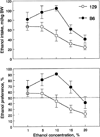
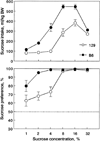
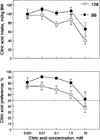
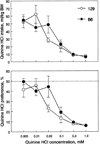
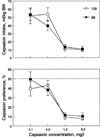
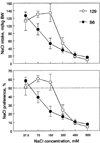
References
-
- Nachman M, Larue C, Le Magnen J. The role of olfactory and orosensory factors in the alcohol preference of inbred strains of mice. Physiol Behav. 1971;6:53–95. - PubMed
-
- Kiefer SW, Lawrence GJ. The sweet-bitter taste of alcohol: Aversion generalization to various sweet-quinine mixtures in the rat. Chem Senses. 1988;13:633–641.
-
- Overstreet DH, Kampov-Polevoy AB, Rezvani AH, Murelle L, Halikas JA, Janowsky DS. Saccharin intake predicts ethanol intake in genetically heterogeneous rats as well as different rat strains. Alcohol Clin Exp Res. 1993;17:366–369. - PubMed
-
- Stewart RB, Russell RN, Lumeng L, Li T-K, Murphy JM. Consumptions of sweet, salty, sour, and bitter solutions by selectively bred alcohol-preferring and alcohol-nonpreferring lines of rats. Alcohol Clin Exp Res. 1994;18:375–381. - PubMed
-
- Belknap JK, Crabbe JC, Young ER. Voluntary consumption of ethanol in 15 inbred mouse strains. Psychopharmacology. 1993;112:503–510. - PubMed
Publication types
MeSH terms
Substances
Grants and funding
LinkOut - more resources
Full Text Sources
Medical
Molecular Biology Databases

